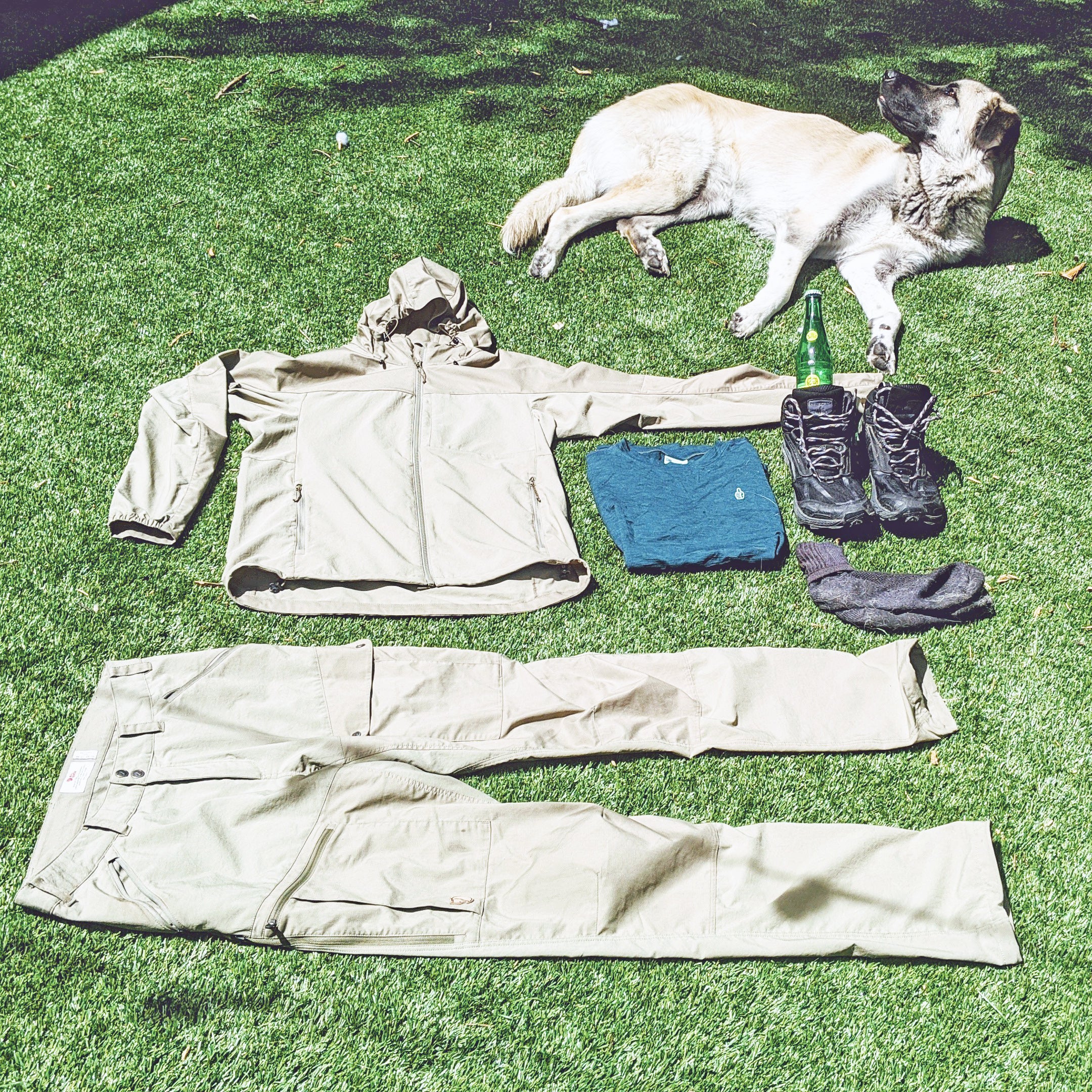Summer brings its own╠řunique challenges for your wardrobe. ItÔÇÖs hot out, so clothing needs to be as light and breathable as possible. But╠řthat╠řcan mean╠řsacrificing protection and durability. In most places, summer also means thunderstorms, so in addition to getting rid of your sweat, the clothing you wear this season needs to shed precipitation.╠ř
Is there such a thing as a single outfit thatÔÇÖs breathable, durable, quick drying, and water-resistant? I think IÔÇÖve found one that fits the bill.╠řAnd all of the pieces here are╠řavailable for both men and women.╠ř
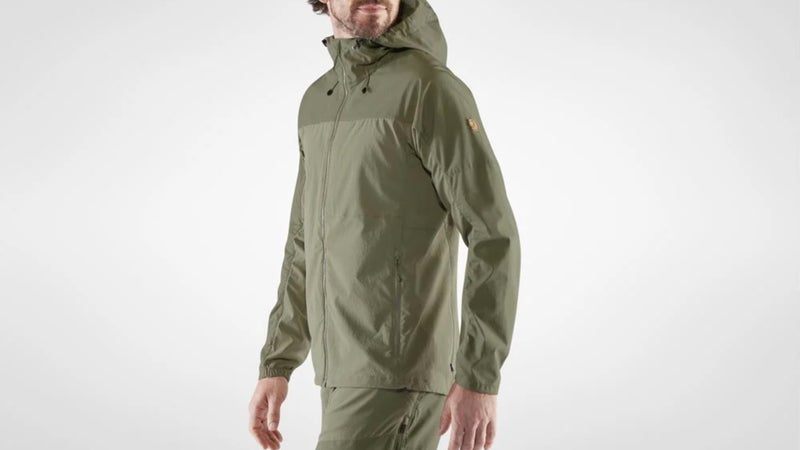
Pants and Jacket
Outdoors, you want to wear full-length pants rather than shorts╠řto protect your legs from the sun, bugs, and brush. The obvious compromise is that pants donÔÇÖt breathe as well as shorts. And in the╠řpast, fabrics that were capable of standing up to activewear outdoors made this╠řproblem worse.╠ř
Fj├Ąllr├Ąven╠řset out to address this╠řissue with its new G-1000 Air Stretch fabric, which╠řcombines the strength of long cotton fibers with the abrasion and water resistance of polyester, all while providing a degree of movement thatÔÇÖs alien to both fabrics. ItÔÇÖs also exceptionally thin╠řand breathes like linen. Air Stretch resembles ripstop canvas╠řand is used across the seat and front of╠řFj├Ąllr├ĄvenÔÇÖs new Midsummer pants ($145)╠řand for the hood, shoulders, and outer sleeves of its╠řMidsummer jacket ($200).╠ř
The brand employs poly-cotton blends in thicker versions of G-1000, too, but in those applications, waxes on the fabric╠řadd water resistance. , cotton fibers are hollow╠řand posses a slight negative charge; this means they attract, absorb, and hold on to positively charged water molecules to a degree thatÔÇÖs incredibly problematic outdoors.╠řAir Stretch, however, which is the lightest fabric in the G-1000 range, is not waxed. And while it can be made more water-resistant by applying wax, doing so risks compromising the breathability of the fabric, thereby╠řreducing╠řits suitability for hot summer conditions.╠ř
If you run items from Fj├Ąllr├ĄvenÔÇÖs new Midsummer range╠řunder a tap, Air Stretch will ultimately soak up water╠řand stay damp for about half an hour, even if itÔÇÖs exposed to direct sunlight. The even lighter╠řrecycled polyester-stretch material that composes the body of the jacket and trousers performs similarly.╠ř
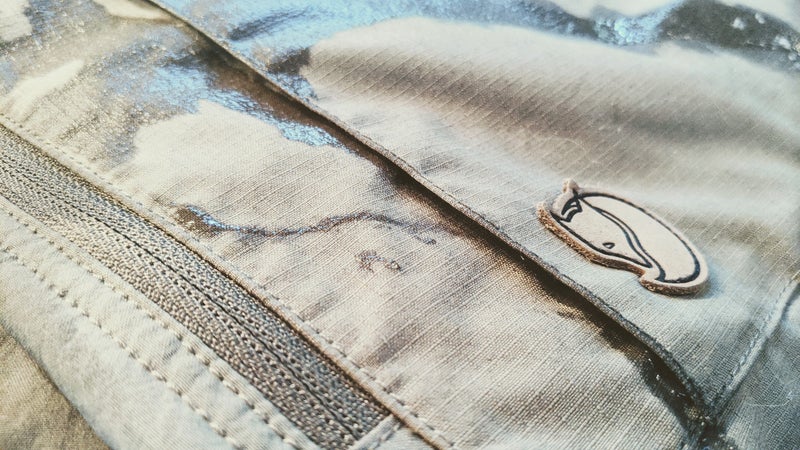
IÔÇÖm explaining all of this so thereÔÇÖs no misconception about the role that items in the Midsummer range are intended for:╠řtheyÔÇÖre durable pieces of clothing that remain exceptionally comfortable in hot weather. They are not suitable as╠řouterwear in cold, wet weather. But itÔÇÖs that trade-off that makes them so perfect for hot conditions.
I spend a lot of time hiking off-trail╠řthrough dense pine forests╠řand thick sagebrush, both of which can wreak havoc╠řon minimal-weight trousers╠řand exposed skin. But after several weeks of wear, the Midsummer trousers demonstrated no signs of damage whatsoever. And while they do retain╠řwater if I submerge╠řthem, they╠řshed light rain and moisture from wet plants just fine. TheyÔÇÖve proven totally comfortable on hot╠řafternoon hikes, at least╠řin the high eighties╠řweÔÇÖve had so far╠řhere in Montana.╠řFor even hotter temperatures, Fj├Ąllr├Ąven╠řincludes generous ventilation zips above the kneesÔÇöthe perfect location for╠řmaintaining╠řthe protection of true pants across the lower legs, while adding the ventilation of a pair of shorts across your thighs.╠ř
For the same reasons that long trousers are a better option in the outdoors than a pair of shorts, carrying a light jacket is a good idea even at the height of summer. The Midsummer jacket is made from the same materials as the pants.╠řIts╠řresistance to wind and mild╠řprecipitation is╠řall youÔÇÖll need for early-morning starts or a╠řlate-evening chill, while remaining cool enough to don╠řover a merino T-shirt into the mid-seventies.╠ř
Another thing proper pants╠řand a jacket are good for is keeping mosquitoes and ticks off your body. While very determined skeeters are capable of biting through G-1000 Air Stretch, thatÔÇÖs easily remedied with . The trousers also include drawcords at their ankles. Cinch those down over a tall sock, and ticks will be unable to get in.╠ř
On the subject of adaptability, I╠řapplied╠ř to both the Midsummer jacket and pants a few days ago. It adds an additional level of water resistance╠řwithout sacrificing breathability, and itÔÇÖs╠řas easy to apply as running your clothes through the wash. Which brings me to the final benefit of G-1000 Air Stretch: because itÔÇÖs not waxed, you can just pop╠řthese pants and jacket in a washing machine without risking a reduction in╠řtheir performance.╠ř
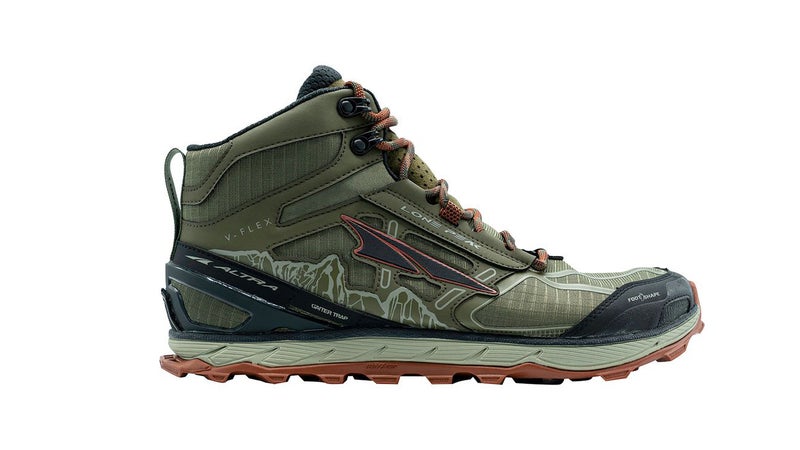
Shoes
Our columnist╠řAndrew Skurka detailed the benefits of wearing lightweight trail runners the other day. I only disagree╠řwith him on one point: ankle protection. I like to wear AltraÔÇÖs ╠ř($130), an╠řankle-high version of the brandÔÇÖs popular trail runners.
IÔÇÖve detailed the same shoe╠řin its waterproof form, but in the summer, I prefer the mesh ones, which forego╠řa waterproof membrane, making them╠řexceptionally breathable╠řand quick to dry. These things are so comfortable, youÔÇÖll forget youÔÇÖll wearing them. Going for the boot-like mid╠řrather than the low-cut shoe╠řmeans dealing with╠řa tight-fitting upper that makes the Lone Peak╠řhard to put on or take off, but that piece also adds a little insurance for your ankles on uneven ground╠řand from brush, rocks, or anything else that might cause injury while walking around╠řor during╠řa fall. Such╠řprotection comes at a weight penalty of only two ounces per pairÔÇötotally worth it if you tend to leave╠řwell-trammeled trails behind.╠ř
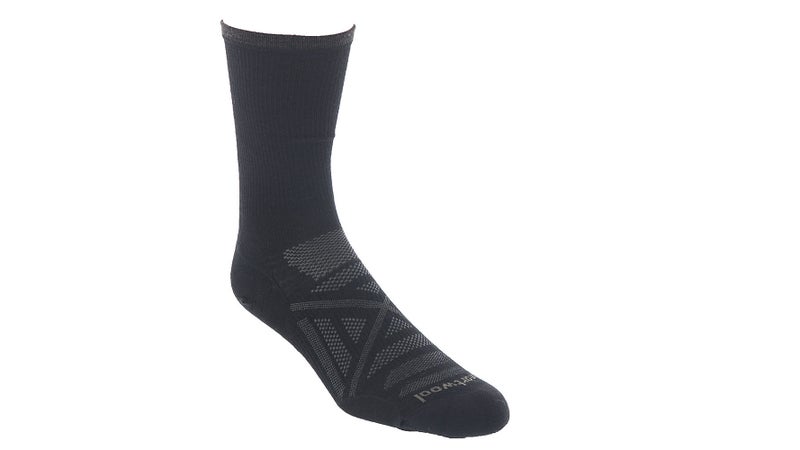
Socks
The theory of wearing nonwaterproof shoes outdoors is that, due to their proximity to the ground╠řand their position at the bottom of your legs,╠řyour feet are going to get wet no matter what. This may happen╠řwhile crossing a streamÔÇöand fording is always safer than jumpingÔÇöor as rain runs down your pant legs. If your feet get wet inside a waterproof shoe, theyÔÇÖll stay wet. If they get wet inside a breathable shoe, the heat you generate as you move, plus the mechanical action created by the movement of your foot, will rapidly push the water out of your shoes. So╠řyour feet end up drier╠řmore often if you forego the waterproof membrane. (You should still wear a waterproof boot in winter conditions, however, and╠řthe taller the better.)
None of the above is possible if you wear a sock that retains water. And╠řin the summer, you want that sock to be as breathable as possible. In very hot, very wet conditions, such as those experienced in a boat, a synthetic sock may be the best option since polyester and nylon fibers do not absorb water. But╠řin the variable conditions youÔÇÖll find on land, I think merino wool is the best option.╠ř
You can read more about the technical properties of wool in this rant I wrote about flannel. The only thing that makes merino different from other types of wool is that itÔÇÖs softer╠řand more comfortable╠řnext to your skin as a result. It retains the same warm-when-wet, cool-when-hot properties as other wool fibers. And all that makes it a perfect material for socks. This time of year, youÔÇÖre going to want the lightest, most ventilated merino socks possible. And the best IÔÇÖve found are these ╠ř($20). Opt for a taller one╠řrather than the╠řno-show kind to help keep ticks off. You can and should spray socks with permethrin for that same reason, too.╠ř
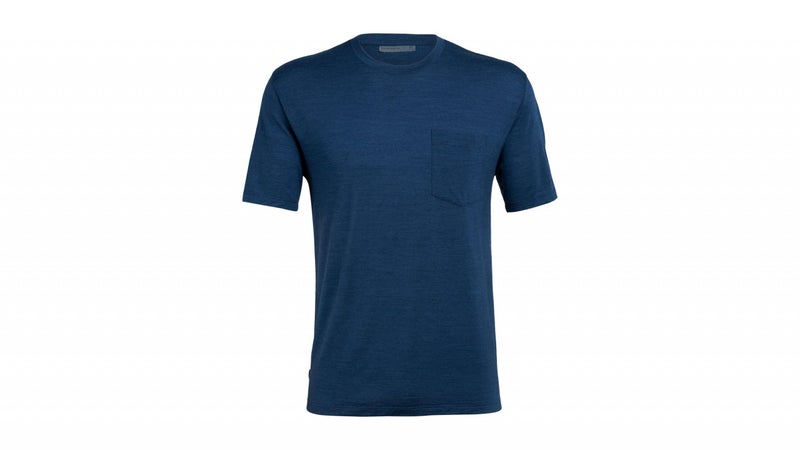
Shirt
Everything that makes merino comfortable on your feet will make it comfortable on your upper body.╠řThe lightest╠řoptions you can typically find are in the 125-to-130-weight range.╠ř
Fabric weights are determined by how much a square meter of a given fabric weighs╠řand are typically expressed in grams per square meter. The lighter weight a fabric is, the thinner╠řand airier itÔÇÖll be. If you want to benefit from merino woolÔÇÖs╠řnaturally temperature-regulating properties╠řand next-to-skin comfort in hot summer weather, you want the lightest shirt you can find.╠ř.╠ř
The trouble is, merino is pricey stuff to begin with, and spinning it into a very light fabric requires special╠řtooling and processes. So╠řlightweight merino T-shirts tend to cost you. Our example Icebreaker shirt is╠ř$110.╠ř
Luckily, you can protect your investment. The tricks to making ultralight merino clothing last include╠řwashing it infrequently, and doing╠řso in cold water╠řon your machineÔÇÖs gentle cycle, then hanging it up to air-dry. Putting merino-wool garments into your dryer will eventually result in holes developing in them. Cared for properly, that $110 T-shirt should easily withstand a couple yearsÔÇÖ worth of very regular wear.╠ř


